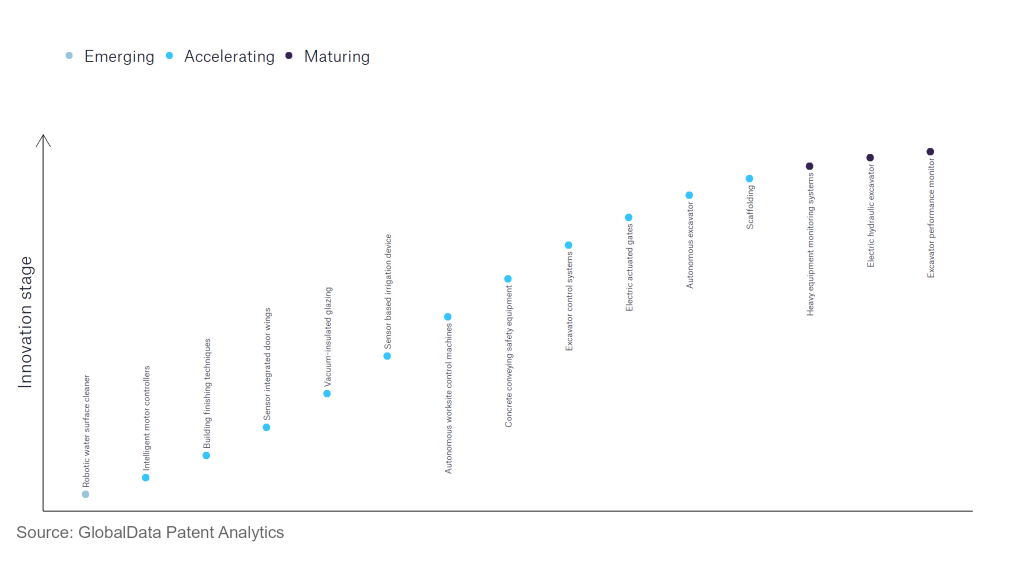Innovation in robotics: Leading companies in vacuum-insulated glazing for the construction industry

The construction industry continues to be a hotbed of innovation, with activity driven by an increased focus on environmental sustainability, workplace safety and circular construction, and the growing importance of technologies such as robotics and the Internet-of-Things (IoT). In the last three years alone, there have been over 248,000 patents filed and granted in the construction industry, according to GlobalData’s report on Robotics in Construction: Vacuum-insulated glazing.
However, not all innovations are equal and nor do they follow a constant upward trend. Instead, their evolution takes the form of an S-shaped curve that reflects their typical lifecycle from early emergence to accelerating adoption, before finally stabilising and reaching maturity.
Identifying where a particular innovation is on this journey, especially those that are in the emerging and accelerating stages, is essential for understanding their current level of adoption and the likely future trajectory and impact they will have.
80+ innovations will shape the construction industry
According to GlobalData’s Technology Foresights, which plots the S-curve for the construction industry using innovation intensity models built on over 179,000 patents, there are 80+ innovation areas that will shape the future of the industry.
Within the emerging innovation stage, robotic water surface cleaners are the disruptive technology that is in the early stage of application and should be tracked closely. Intelligent motor controllers, building finishing techniques, and sensor-integrated door wings are some of the accelerating innovation areas, where adoption has been steadily increasing. Among maturing innovation areas are heavy equipment monitoring systems and electric hydraulic excavator, which are now well established in the industry.
Innovation S-curve for robotics in the construction industry

